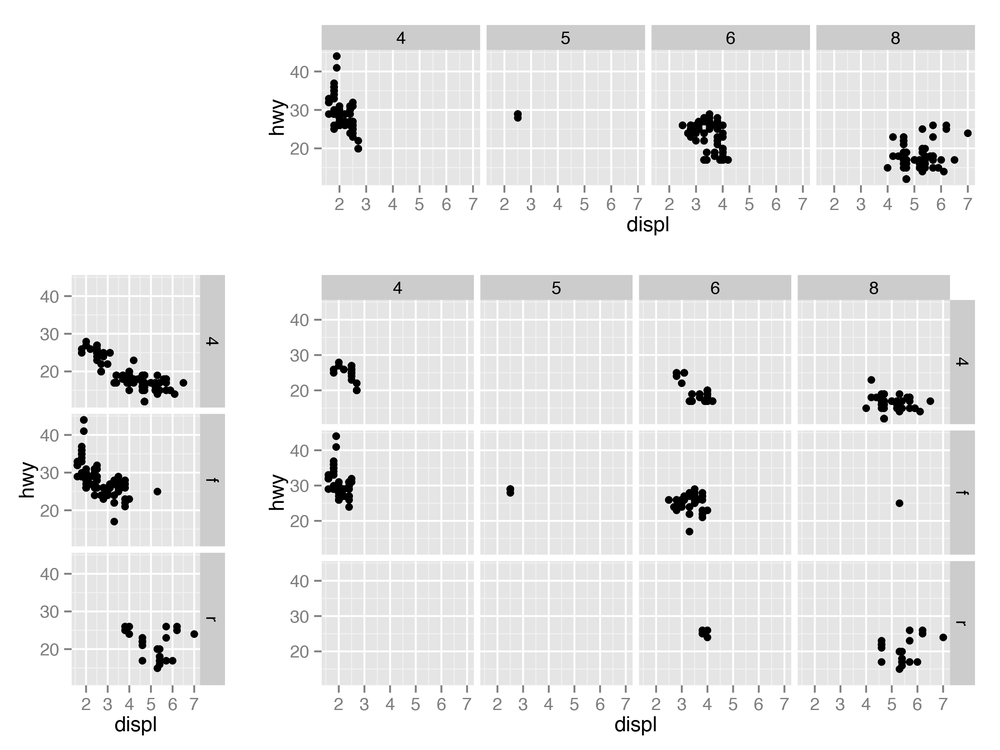Chapter 11. Facets
One of the most useful techniques in data visualization is rendering groups of data alongside each other, making it easy to compare the groups. With ggplot2, one way to do this is by mapping a discrete variable to an aesthetic, like x position, color, or shape. Another way of doing this is to create a subplot for each group and draw the subplots side by side.
These kinds of plots are known as Trellis displays. They’re implemented in the lattice package as well as in the ggplot2 package. In ggplot2, they’re called facets. In this chapter I’ll explain how to use them.
Splitting Data into Subplots with Facets
Problem
You want to plot subsets of your data in separate panels.
Solution
Use facet_grid() or facet_wrap(), and specify the variables on which to split.
With facet_grid(), you can
specify a variable to split the data into vertical subpanels, and
another variable to split it into horizontal subpanels (Figure 11-1):
# The base plotp<-ggplot(mpg,aes(x=displ,y=hwy))+geom_point()# Faceted by drv, in vertically arranged subpanelsp+facet_grid(drv ~.)# Faceted by cyl, in horizontally arranged subpanelsp+facet_grid(.~ cyl)# Split by drv (vertical) and cyl (horizontal)p+facet_grid(drv ~ cyl)

With facet_wrap() ...
Get R Graphics Cookbook now with the O’Reilly learning platform.
O’Reilly members experience books, live events, courses curated by job role, and more from O’Reilly and nearly 200 top publishers.

